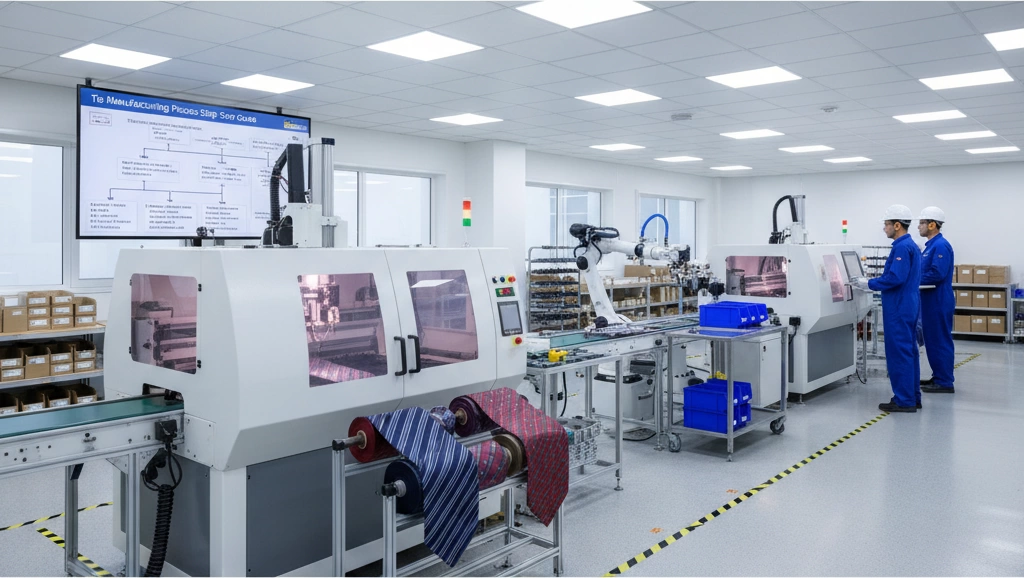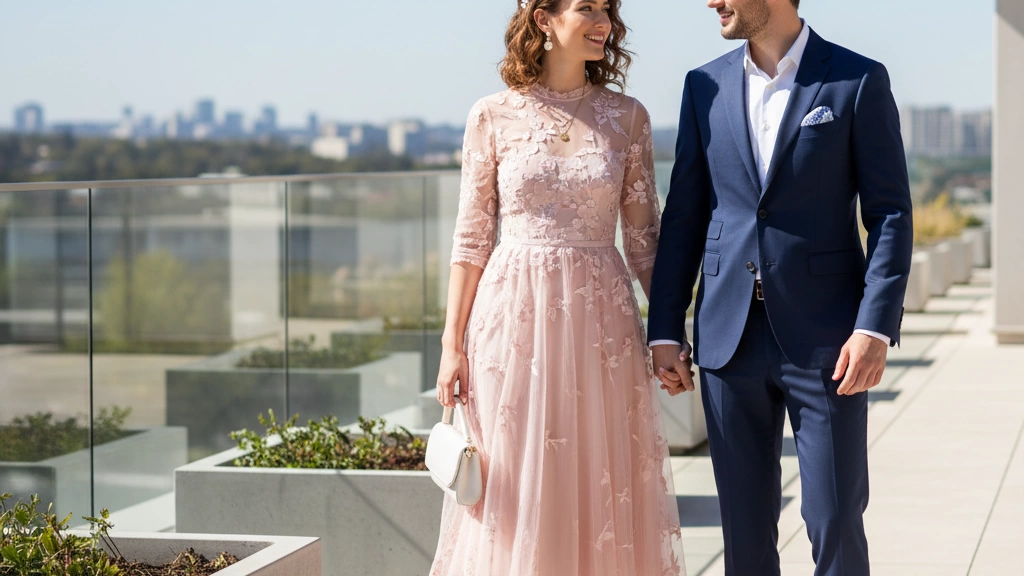If you’ve ever wondered how ties are made, you’re in for a fascinating behind-the-scenes journey. From the slick silk threads to that perfect tie dimple, every step in the necktie manufacturing process blends craftsmanship with precision. Whether you\’re a fashion lover curious about what sets a luxury tie apart or just keen to know why some ties feel so different in your hand, understanding this process unlocks a new level of appreciation. In this guide, you’ll discover how raw fabric transforms into sharp, stylish neckwear through expert cutting, sewing, and finishing techniques—and learn the insider tricks that help you spot quality at a glance. Ready to dive into the world of ties? Let’s explore the artistry and engineering behind one of men’s most enduring accessories.
Types of Neckties and Construction Styles
When it comes to necktie construction, not all ties are created equal. The structure and style impact both look and durability. Here\’s a quick rundown:
- Standard 3-Fold Tie: The most common type. Made from three pieces of fabric folded and sewn together. It offers a classic shape and good strength.
- 6-Fold & 7-Fold Ties: Considered true luxury ties. These are cut from a single piece of fabric that\’s folded six or seven times without any interlining. The result? A thicker, more substantial tie with natural weight and drape.
Self-Tipped vs Untipped vs Piped
- Self-Tipped ties use the same fabric on the tip as the front, giving a seamless, high-end look.
- Untipped ties leave the back fabric exposed at the tip. These are usually cheaper and simpler.
- Piped ties have a thin fabric strip (pipe) sewn around the edges, adding a neat outline—perfect for extra detail.
Tie Shapes: Skinny, Classic, Bow Ties, and Ascots
- Skinny ties are narrow and modern, popular for a sleek, youthful vibe.
- Classic ties are wider, timeless, and versatile for all occasions.
- Bow ties loop around the neck and tie in a bow—think formalwear or quirky style.
- Ascots are wider neckcloths, often silk, that sit flat under the shirt collar—perfect for vintage or semi-formal looks.
Each construction style and shape influences not just appearance, but how the tie feels and holds up over time. Choosing the right type helps you match your style and occasion perfectly.
Raw Materials: What the Best Ties Are Made Of
The quality of a tie starts with its raw materials. The finest ties are usually made of silk, but not all silk is the same. Mulberry silk is the most prized for its smoothness and sheen, while raw silk and tussah silk offer a more textured, natural look. Shantung silk is another popular choice, known for its slightly rougher texture and subtle shimmer.
Beyond silk, ties can also be made from wool, linen, cotton, microfiber, and knits. Wool ties are ideal for colder months thanks to their warmth and texture. Linen and cotton ties give a lighter, breathable feel perfect for summer or casual settings. Microfiber serves as a durable, affordable alternative that mimics silk but resists wrinkling.
The interlining inside a tie is just as important as the outer fabric. High-quality ties commonly use wool or wool-blend interlinings to provide structure and shape while maintaining flexibility. Cotton interlining is softer but offers less support. The choice of interlining affects how the tie drapes and holds its signature knot.
Tipping fabric (the piece sewn at the back tip of the tie) and keeper fabric (the loop that holds the narrow end) also matter. These are often made from the same material as the tie or a complementary fabric, adding a touch of refinement and durability.
For more on styles and fit, you might find our guide on skinny vs classic ties useful when choosing a tie that suits your look.
The Step-by-Step Manufacturing Process

Making a tie involves a detailed sequence, starting with design and pattern making. Designers sketch the shape and size, ensuring the classic slim or wider cut fits right. Once the pattern is set, fabric inspection follows—checking for flaws is critical before cutting.
Next is the all-important cutting stage, where the fabric is sliced on a 45° bias. This diagonal cut gives a tie its stretch and proper drape. Cutting angles matter—a straight cut won’t hang as well. For fabrics, there’s a choice between printed and woven, with jacquard looms weaving complex patterns directly into the fabric for depth and texture.
When it comes to cutting the outer shell, manufacturers use blades or lasers. Laser cutting is precise and clean, reducing frays but traditional blade cuts are still popular for softer fabrics.
The sewing stage is where it gets interesting. Many factory ties use a Liba machine, a fast method but less flexible, while luxury and handmade ties feature the hand-slipped stitch. This stitch is key—it creates the famous “tie dimple,” a small puckered fold under the knot that helps the tie hold its shape.
After sewing the shell, the interlining—usually wool or cotton-based—is inserted to add structure and weight. Without good interlining, ties feel limp or too stiff.
Next, the tie is folded and shaped by hand or machine, taking on its final form. The edges get their finishing touch—tipping—either hand-rolled for softness and durability or machine-stitched for speed. The difference here is easy to feel: hand-rolled edges feel smoother and look more refined.
Then comes the pressing stage, often using a special roll press to set the tie\’s curves without flattening it, keeping that signature shape.
Finally, they attach the loop label and a bar tack—a tiny but strong stitch that prevents the tie’s keeper loop from slipping off. Every tie undergoes final quality control and hand inspection to catch any flaws before it hits the shelves.
This intricate process makes a quality tie stand out, combining skilled craftsmanship and precise machinery to get that perfect look and feel. For tips on styling a tie right, check out guides on transitioning your look with one accessory.
Handmade vs Machine-Made vs Hybrid Ties
When it comes to necktie construction, the difference between handmade, machine-made, and hybrid ties is significant in both quality and price.
True bespoke ties are crafted in small ateliers, especially in fashion hubs like Naples and Milan. These ties often feature hand-rolled edges, hand-stitched slip stitches, and meticulous folding that shapes the tie to perfection. Artisans spend hours ensuring every detail, including the tie dimple and tipping fabric, is flawless. Brands like Charvet and Marinella are legendary for this luxurious handmade approach.
On the other hand, factory luxury ties — think Drake’s — often blend hand finishing with precise machine processes. These ties maintain high standards with elements like hand-stitched slip stitches but benefit from some automation to keep up with demand. This hybrid method offers great quality at a more accessible price point.
Mid-tier brands, frequently produced in China or Italy, lean more toward machine-made production. While they might incorporate some handmade touches, like limited hand-sewing or hand-tipping, the bulk of construction happens through machines to optimize costs.
At the opposite end are fast-fashion ties, which are almost entirely machine-made. These tend to use synthetic fabrics and simpler interlining, sacrificing durability and the signature drape of a well-made silk tie.
Understanding these differences helps when choosing a tie—especially if you want something that will last and drape beautifully. For styling tips, you might also appreciate advice on the rules of wearing a bow tie with confidence, which touches on how craftsmanship affects overall look and feel.
How to Spot a High-Quality Tie in 30 Seconds
Knowing how to spot a quality tie quickly can save you from wasting money on poor craftsmanship. Here are simple tips to check in under a minute:
-
Check the bias cut: A top-tier tie is cut on a 45° bias. This diagonal cut allows it to drape naturally and prevent twisting. Hold the tie up and twist it gently—if it resists twisting easily or holds its shape well, it’s likely bias-cut.
-
Feel the hand-rolled edges: Real luxury ties often have hand-rolled edges instead of machine-stitched ones. Run your fingers along the edges—hand-rolled feels smooth, neat, and slightly rounded without bulk.
-
Pull the slip stitch test: The slip stitch is what gives a tie its unique dimple. Try gently tugging one end of the lining inside; a quality tie uses this loose stitch for flexibility. If it feels tight or machine-locked, it’s probably machine-made.
-
Weight & drape: Hold the tie up—good ties have a solid weight without feeling heavy. They fall straight and smooth, showing the interlining works well to shape the form.
-
Three-piece construction check: Look inside the tip of the tie—high-quality ties often have three main parts sewn together (shell, interlining, tipping fabric). This layered build adds durability and structure.
Mastering these quick checks will keep you confident in choosing ties that last and perform well. For more on tie details like the bar tack, check out this guide on the art of the tie bar.
Environmental Impact & Sustainable Tie Production
Traditional silk production demands significant water and pesticide use, which raises environmental concerns. Mulberry silkworm farming, for example, relies heavily on mulberry leaves sprayed with chemicals, impacting ecosystems. That’s why the industry is shifting toward more sustainable options.
Recycled silk is an emerging solution, repurposing leftover silk fibers without fresh cultivation. Vegan alternatives made from organic cotton, linen, or innovative plant-based fibers also reduce the environmental footprint. These materials avoid heavy chemical use and conserve water.
Several brands have embraced sustainable tie production in 2025, focusing on eco-friendly fabrics and ethical manufacturing. If you\’re interested in timeless accessories with a clear conscience, it’s worth exploring sustainable ties and even pairing them with eco-conscious pocket squares, which can elevate your look responsibly. For more on this, check out our guide on the rise of sustainable and ethical fashion jewelry.
Fun Facts & Myths About Tie Making
Ties come with their share of interesting stories and common misconceptions that many don’t know about.
Why 7-Fold Ties Don’t Use 7 Times More Fabric
The name “7-fold” suggests a tie is made with seven layers of fabric folded together, but that’s not entirely true. Unlike standard ties, a true 7-fold tie is crafted from a single piece of silk folded seven times without any interlining. While it uses more fabric than a typical 3-fold tie, it doesn’t require seven times as much. The careful folding technique creates a thicker, more luxurious feel without excess waste.
The Origin of the “Tie Dimple”
That iconic dimple right under the knot isn’t just for show—it’s a hallmark of quality necktie construction. The dimple forms naturally when the slip stitch, a special hand-sewn stitch technique, creates a slight tension in the fabric just below the knot. It adds dimension and prevents the tie from looking flat or cheap. Interestingly, the dimple became a fashion staple in the early 20th century, tied to refined menswear and craftsmanship.
The Most Expensive Tie Ever Made
Ties have also made headlines for their price tags. The most expensive tie ever recorded was a diamond-studded piece valued at over $1.2 million, crafted with 280 diamonds and 18-karat gold thread. While this is obviously far from everyday wear, it showcases how ties can blend traditional craftsmanship with extravagant luxury. For most of us, focusing on fabric quality and construction like hand-rolled edges and a good slip stitch is what truly sets a premium tie apart.
For those keen to accessorize beyond ties, understanding the subtle art of neckwear pairs well with guides like what is a pocket square actually for to sharpen your overall style game.


